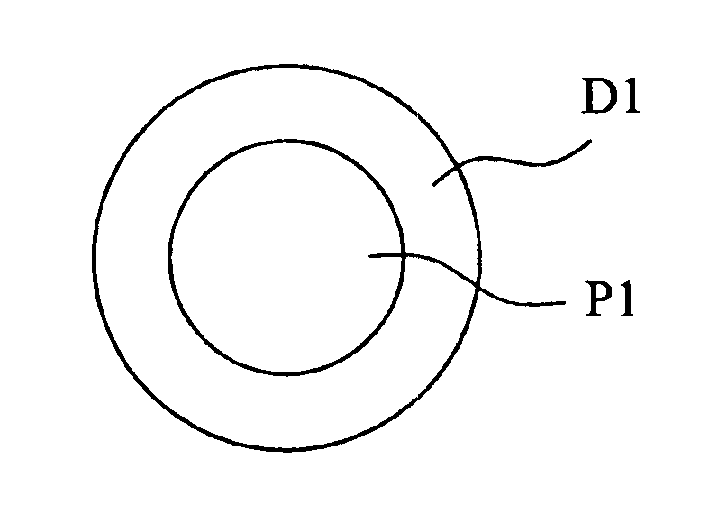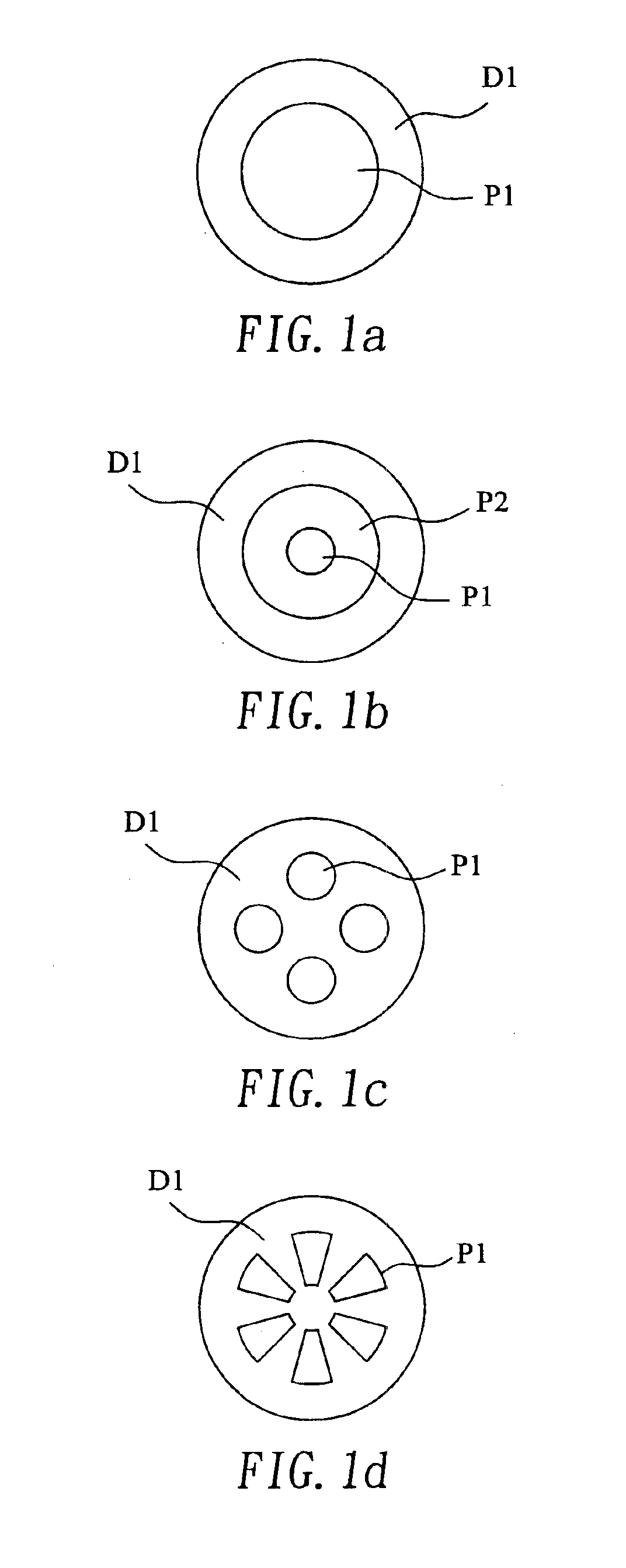Dual function prosthetic bone implant and method for preparing the same
a bone implant and dual function technology, applied in the field of prosthetic bone implants, can solve the problems of replacing the metallic cage sitting between the vertebrae, and achieve the effect of improving the compressive strength of the molded cpc article, rapid blood/body fluid penetration and tissue ingrowth
- Summary
- Abstract
- Description
- Claims
- Application Information
AI Technical Summary
Benefits of technology
Problems solved by technology
Method used
Image
Examples
example 1
Effect of Immersion Time on Compressive Strength of CPC Block
[0070]To a setting solution of IM phosphoric acid solution (pH=5.89) the ND-CPC powder from PREPARATIVE EXAMPLE 3 was added in a liquid / powder ratio (LIP ratio) of 0.4, i.e. 4 ml liquid / 10 g powder, while stirring. The resulting paste was filled into a cylindrical steel mold having a length of 12 mm and a diameter of 6 mm, and was compressed with a gradually increased pressure until a maximum pressure was reached. The maximum pressure was maintained for one minute, and then the compressed CPC block was removed from the mold. At the 15th minute following the mixing of the liquid and powder, the compressed CPC block was immersed in a Hanks' solution for 1 day, 4 days, and 16 days. Each test group of the three different periods of immersion time has five specimens, the compressive strength of which was measured by using a AGS-500D mechanical tester (Shimadzu Co., Ltd., Kyoto, Japan) immediately following the removal thereof f...
example 2
Effect of Whiskers on Compressive Strength of TTCP / DCPA-Based CPC Block
[0073]The procedures of EXAMPLE 1 were repeated by using the C—CPC powder prepared in PREPARATIVE EXAMPLE 2 and the ND-CPC powder prepared in PREPARATIVE EXAMPLE 3. The maximum pressure used to compress the CPC paste in the mold in this example was 156.2 MPa. The results for one-day immersion time are listed in Table 2.
[0074]
TABLE 2CompressiveCPC powderstrength (MPa)Standard deviation (MPa)C-CPC (no whisker) 62.35.0ND-CPC (with whisker)138.08.2
[0075]It can be seen from Table 2 that the compressive strength, 62.3 MPa, of the immersed compressed CPC block prepared from the conventional CPC powder (no whisker) is about 1.7 times of that (37.3 MPa) of the non-immersed compressed CPC block in Table 1, and the compressive strength, 138.0 MPa, of the immersed compressed CPC block prepared from the non-dispersive CPC powder (with whisker) is about 3.7 times of that of the non-immersed compressed CPC block in Table 1.
example 3
Effect of Whiskers on Compressive Strength of TTCP-Based CPC Block
[0076]Ca4(PO4)2O (TTCP) powder as synthesized in PREPARATIVE EXAMPLE 1 was sieved with a #325 mesh. The sieved powder has an average particle size of about 10 μm. To the TTCP powder HCl aqueous solution (pH=0.8) was added according to the ratio of 1 g TTCP / 13 ml solution. The TTCP powder was immersed in the HCl aqueous solution for 12 hours, filtered rapidly and washed with deionized water, and filtered rapidly with a vacuum pump again. The resulting powder cake was dried in an oven at 50° C. The dried powder was divided into halves, ground for 20 minutes and 120 minutes separately, and combined to obtain the non-dispersive TTCP-based CPC powder, the particles of which have whisker on the surfaces thereof. A setting solution of diammonium hydrogen phosphate was prepared by dissolving 20 g of diammonium hydrogen phosphate, (NH4)2HPO4, in. 40 ml deionized water. The procedures in EXAMPLE 1 were used to obtain the wet sp...
PUM
| Property | Measurement | Unit |
|---|---|---|
| porosity | aaaaa | aaaaa |
| porosity | aaaaa | aaaaa |
| porosity | aaaaa | aaaaa |
Abstract
Description
Claims
Application Information
 Login to View More
Login to View More - R&D
- Intellectual Property
- Life Sciences
- Materials
- Tech Scout
- Unparalleled Data Quality
- Higher Quality Content
- 60% Fewer Hallucinations
Browse by: Latest US Patents, China's latest patents, Technical Efficacy Thesaurus, Application Domain, Technology Topic, Popular Technical Reports.
© 2025 PatSnap. All rights reserved.Legal|Privacy policy|Modern Slavery Act Transparency Statement|Sitemap|About US| Contact US: help@patsnap.com



